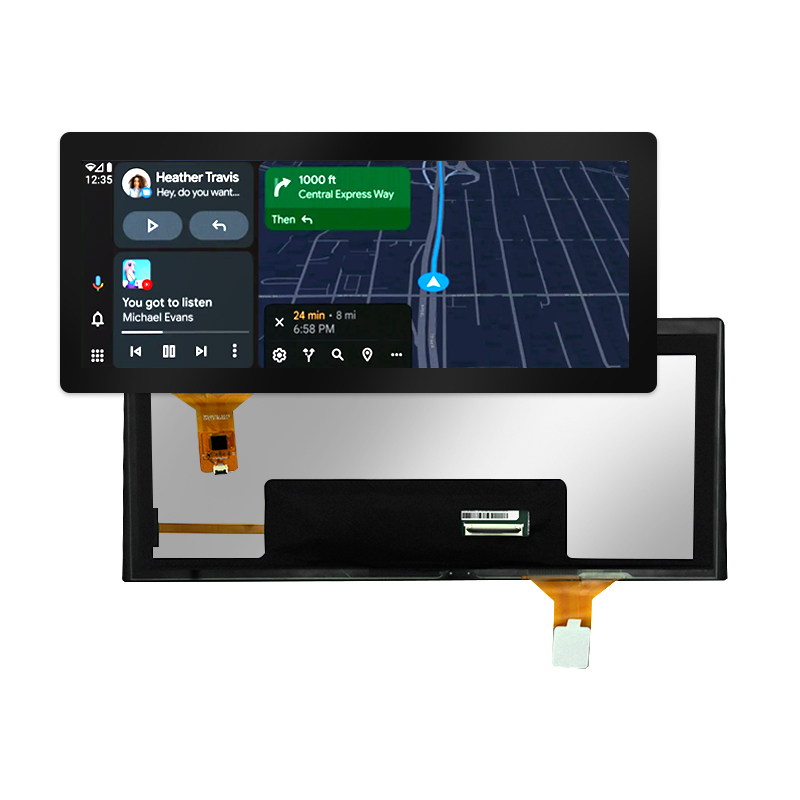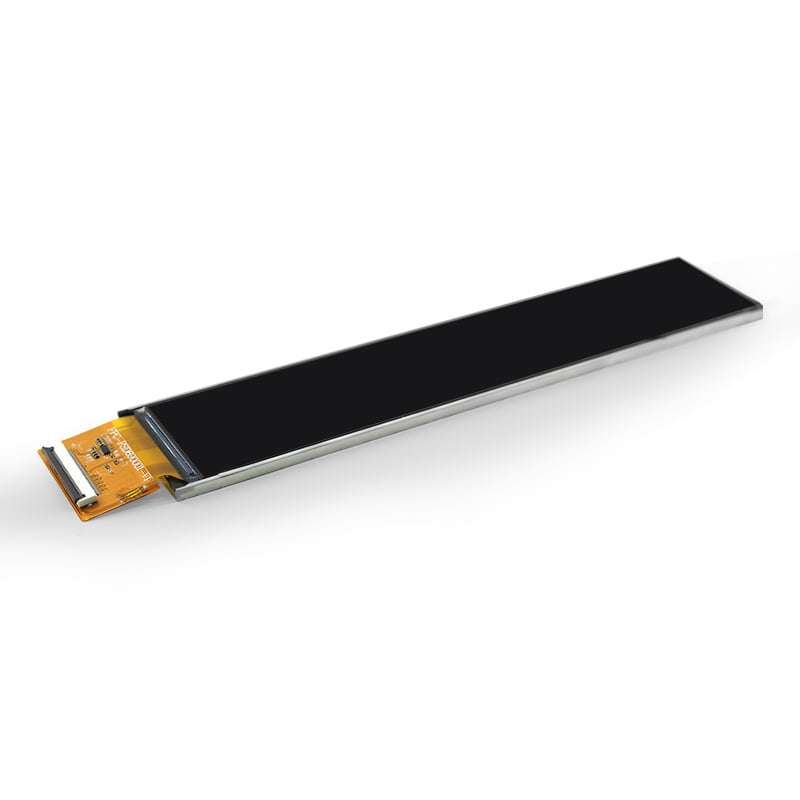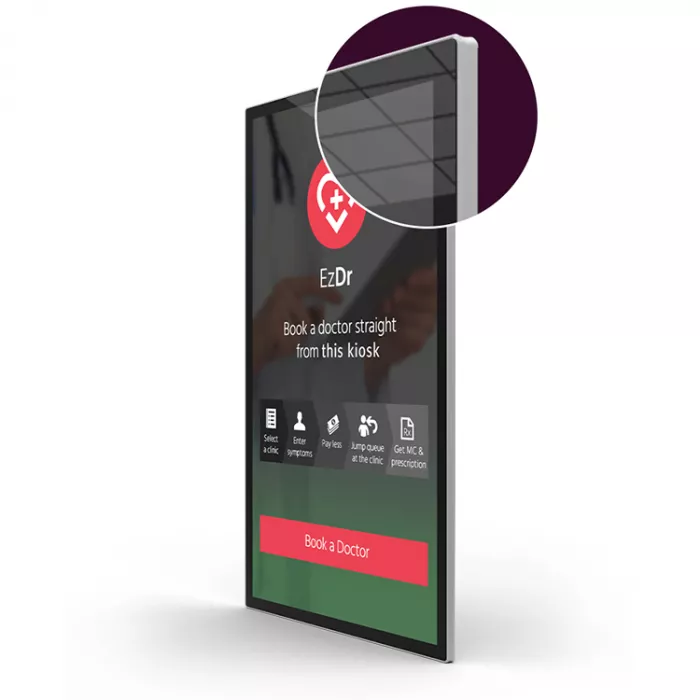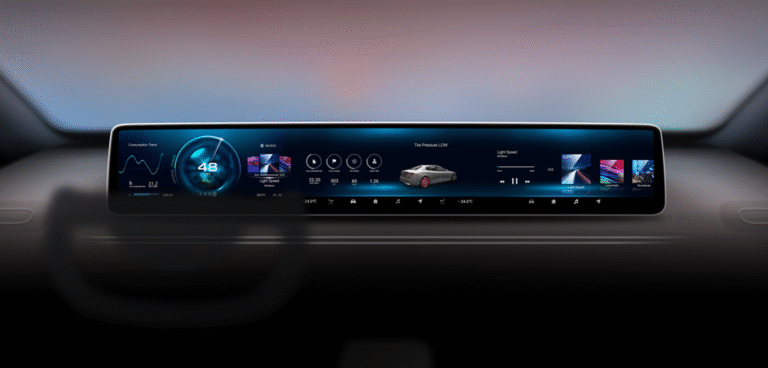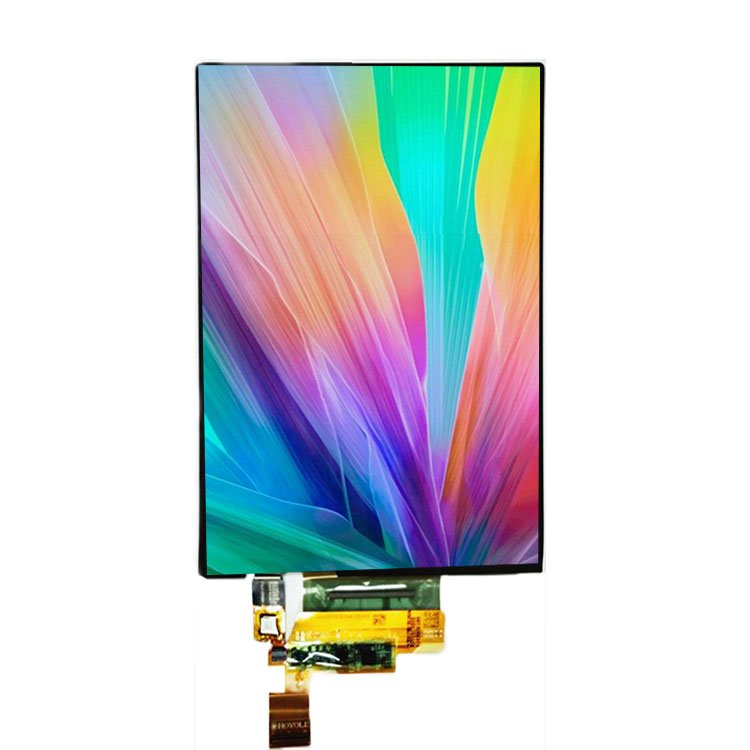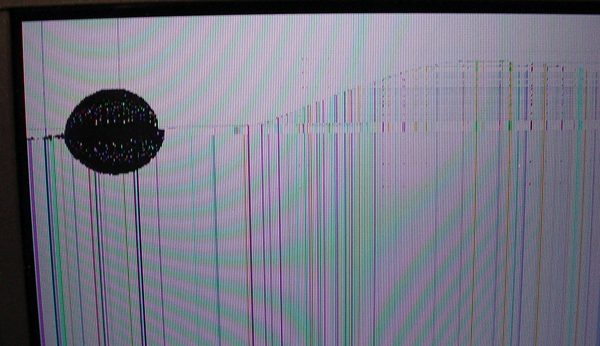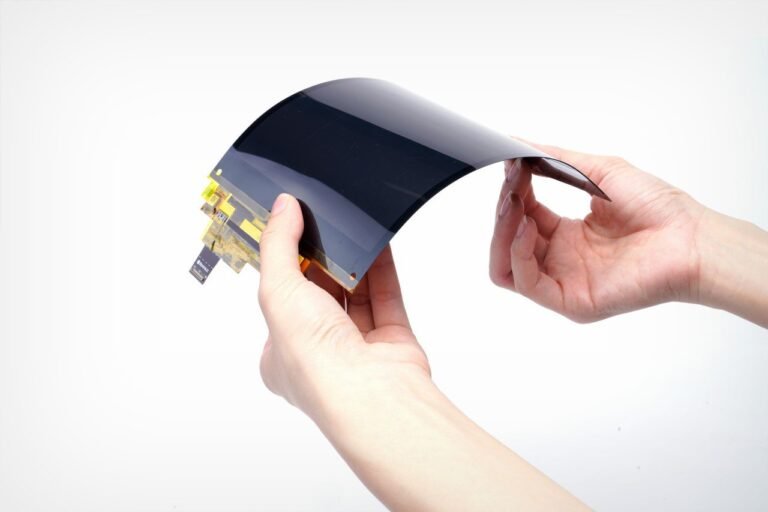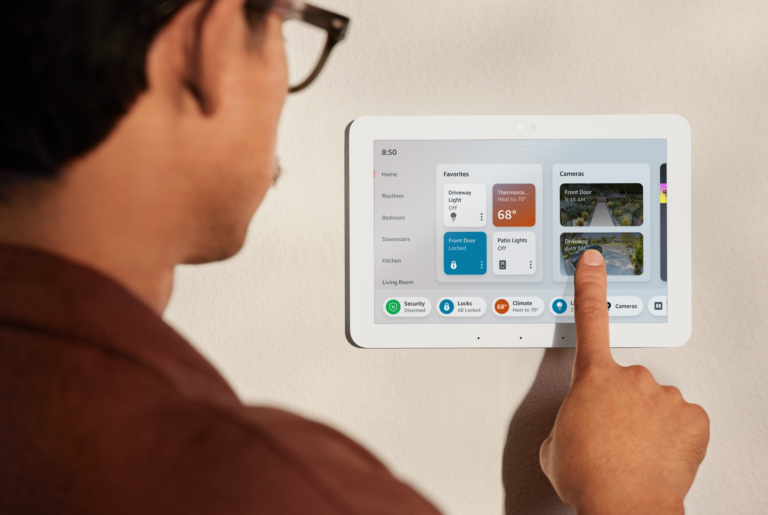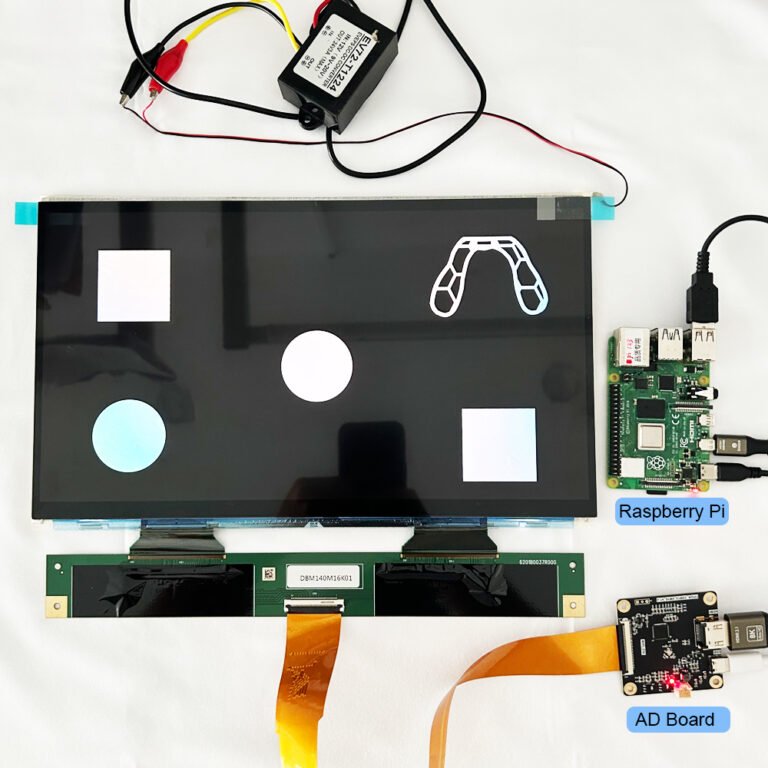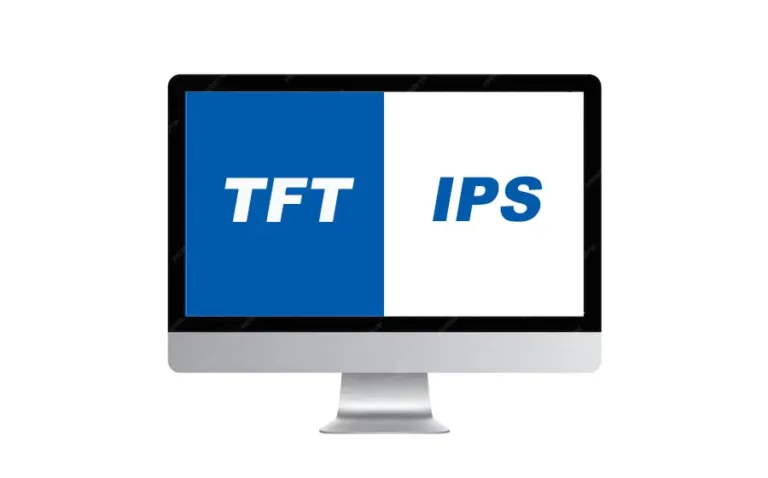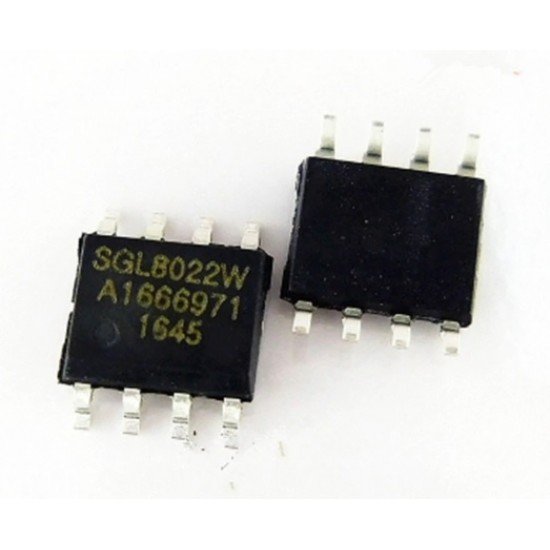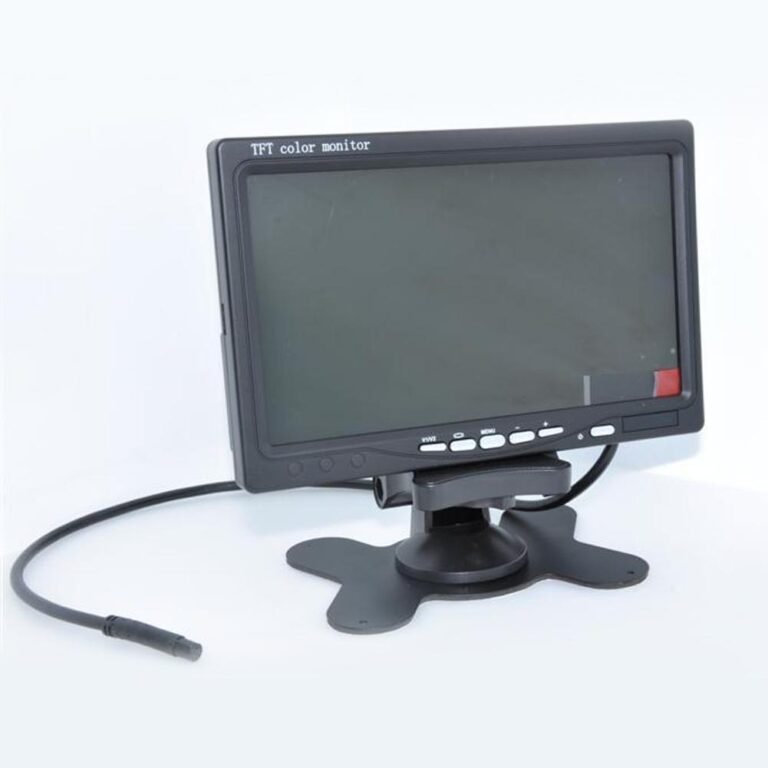Screen Layering: Traditional vs Integrated Approaches
A typical touchscreen stack includes three layers:
- Cover glass (lens)
- Separate touch sensor layer
- LCD display panel
Traditional methods use two bond lines and an air gap between layers, increasing thickness and introducing glare. In contrast, In‑Cell, On‑Cell, and OGS integrate the touch layer into existing components, improving optical performance and reducing weight.
In‑Cell Technology: Touch Embedded Inside the LCD
Definition: Touch sensing electrodes are built directly into the LCD panel—typically at the VCOM or color filter layer.
Caractéristiques principales :
- Ultra-thin design with no separate touch layer
- Superior optical clarity with reduced internal reflections
- High integration cost and manufacturing complexity
- Lower yield due to combined touch/display failures
Used in premium devices, In‑Cell technology is ideal where sleek design and visual clarity are prioritized.
On‑Cell Technology: Touch Placed On the Color Filter Layer
Definition: Touch sensors are patterned between the LCD’s color filter and polarizer layers.
Key Attributes:
- Thicker than In‑Cell, but easier to manufacture
- Better impact resistance compared to In‑Cell
- Moderate cost and complexity
- Can cause color non-uniformity under pressure
On‑Cell is common in AMOLED and mid-to-high-end LCDs, balancing performance and feasibility.
OGS (One Glass Solution / Touch On Lens)
Definition: Touch electrodes are deposited directly onto the inner surface of the cover glass, eliminating a separate touch panel.
Benefits:
- Removes one glass and bonding layer, reducing weight and cost
- Offers excellent transparency and touch response
- Lower manufacturing difficulty and better yield
Défis :
- Requires precise glass processing
- Slightly thicker than In‑Cell, but stronger overall
OGS is widely adopted in smartphones and tablets due to its scalability and visual performance.
Comparative Summary
| Fonctionnalité | In‑Cell | On‑Cell | OGS (Touch-On-Lens) |
|---|---|---|---|
| Thickness | Thinnest | Thin | Modéré |
| Optical Clarity | Excellent | Good | Excellent |
| Sensibilité au toucher | Haut | Moderate–High | Très élevé |
| Manufacturing Difficulty | Très élevé | Haut | Faible |
| Rapport coût-efficacité | Lowest | Modéré | Haut |
| Durabilité | Modéré | Haut | Modéré |
| Repairability | Faible | Faible | Medium (glass only) |
Real-World Adoption Examples
- In‑Cell: Used in early Apple iPhones, Nokia Lumia series
- On‑Cell: Adopted in AMOLED smartphones and Microsoft Surface tablets
- OGS: Popular across Xiaomi, Huawei, and other mid-to-high-end mobile devices
Use Cases and Design Recommendations
Wearables & Smartphones:
- Choose In‑Cell or OGS for slim form factors and superior visual performance
Industrial Embedded Systems:
- OGS is ideal for rugged, durable touch interfaces
- On‑Cell is suitable for moderate thickness with good integration
Outdoor Displays & Rugged Devices:
- OGS with hardened glass is most impact-resistant
- Avoid In‑Cell if display failure risk is critical
Technical Considerations
- Touch Noise Interference: In‑Cell and On‑Cell require careful electrical design to avoid signal distortion
- Rendement de fabrication : La technologie In-Cell présente des taux de rebut plus élevés en raison de son intégration serrée
- Fragilité des bords du verre : L'OGS nécessite une découpe de précision pour éviter les fissures
- Variation de l'angle de vision : L'On-Cell peut présenter plus de reflets sous contrainte angulaire
Questions fréquemment posées
Q1 : Quelle technologie offre les meilleures performances optiques ?
L'In-Cell et l'OGS offrent tous deux une excellente transparence grâce à moins de réflexions internes.
Q2 : Quelle est la plus économique pour la production de masse ?
L'OGS offre généralement le meilleur rapport coût-performance.
Q3 : Peuvent-elles être utilisées avec des gants ?
Oui, particulièrement l'OGS et l'On-Cell. L'In-Cell peut nécessiter des réglages.
Q4 : Puis-je remplacer uniquement la couche tactile en cas de casse ?
Seule l'OGS permet une réparation partielle. L'In-Cell et l'On-Cell sont entièrement soudés à l'écran.
Q5 : Quelle est la plus adaptée aux environnements difficiles ?
L'OGS avec verre renforcé ou couvercle de lentille est la plus résistante aux chocs.
Conclusion
Le choix entre In-Cell, On-Cell et OGS dépend des besoins spécifiques de votre produit :
- Pour les designs ultra-minces et haut de gamme, optez pour In‑Cell
- Pour les une intégration équilibrée et une durabilité,utilisez On‑Cell
- Pour les des appareils économiques, évolutifs et robustes, choisissez l'OGS
Chacune offre une combinaison unique de clarté, coût, fabricabilité et durabilité. Comprendre ces compromis garantit une meilleure expérience utilisateur et un développement produit plus fluide.




